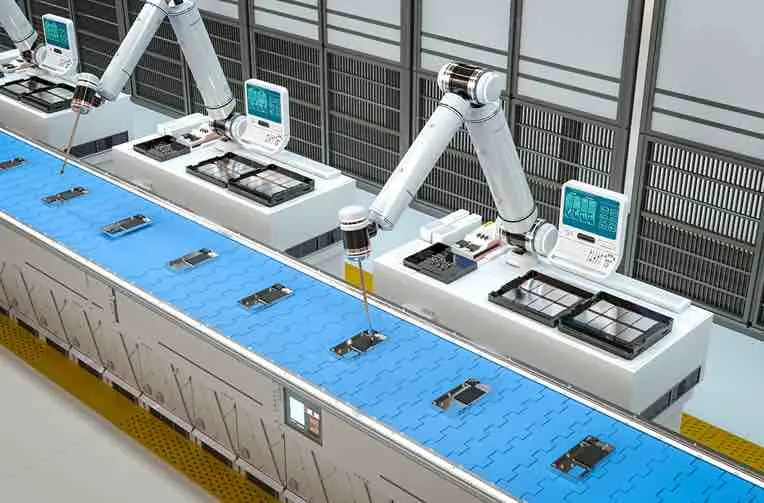Calculating the payback and ROI of your automation project is essential to see when you’ll start making money and how profitable the project will be. Alina, Qviro’s AI Automation Assistant, makes this task easier. With Alina, you can quickly assess your costs and savings. This tool helps you plan your finances without spending too much time or money. In this article, you’ll learn how to calculate payback and ROI step-by-step and see how Alina can simplify the process for you.
Understanding Payback & ROI:
Definition of Payback Period:
The payback period shows how long it will take for you to recover your investment. To calculate it, divide your initial investment by the annual savings or cash inflows.
For example, if you invest $100,000 and save $25,000 each year, your payback period is 4 years. This helps you see when you’ll start making a profit.
Definition of ROI (Return on Investment):
ROI tells you how much profit you earn from your investment. To calculate ROI, subtract your initial investment from the total gains. Then divide this amount by your initial investment and multiply by 100 to get a percentage. This percentage shows how profitable your investment is.
Difference Between Payback Period & ROI:
The payback period shows how long it takes to break even, while ROI measures the total profitability of your investment. Both help you understand the financial impact of your automation project.
5 Key Factors Influencing ROI & Payback Period:
1. Initial Costs:
Initial costs include what you spend on robotics, installation, and training. Make sure you estimate these costs accurately to avoid unexpected expenses. Knowing the full cost upfront helps you plan better.
2. Operational Costs:
Ongoing costs cover maintenance, energy use, and labor savings. Estimate how much you’ll save in these areas with automation. For instance, automation can reduce maintenance needs and energy consumption.
3. Increased Productivity:
Automation can speed up your production and improve efficiency. Measure how much faster and more effectively your production will run. Look at examples from other successful automation projects for guidance.
4. Quality Improvements:
Automation can enhance your product quality and reduce defects. Better quality means fewer returns and less rework, which saves you money. Calculate how these quality improvements will cut costs.
5. Labor Savings:
Automation reduces labor costs and allows you to reassign workers. Calculate your savings from lowering manual labor and reallocating staff to more valuable tasks.

Calculating the Payback Period:
Formula for Payback Period:
To find the payback period, use this formula:
Payback Period = Initial Investment / Annual Cash Inflows
This formula tells you how long it will take to recoup your investment based on the cash you save each year.
Steps to Calculate Payback Period:
- Collect Data: Gather all your cost and savings data. This includes your initial investment and the annual cash inflows you expect from automation.
- Apply the Formula: Divide the total initial investment by your annual cash inflows. For example, if you invest $100,000 and save $25,000 each year, your payback period is 4 years.
This simple calculation helps you understand when you’ll start seeing a return on your investment and allows you to plan your finances effectively.

Calculating ROI:
Formula for ROI:
To calculate ROI, use this formula:
ROI = (Net Profit / Initial Investment) × 100%
This formula shows you the percentage return on your investment. Net profit is the total gain minus your initial investment.
Steps to Calculate ROI:
- Gather Data: Collect your net profit and initial investment amounts. Net profit is the money you make from automation after subtracting your initial costs.
- Apply the Formula: Divide your net profit by your initial investment, then multiply by 100 to get the percentage. For example, if your net profit is $50,000 and your initial investment was $100,000, ROI is (50,000 / 100,000) × 100%, which equals 50%.
This calculation helps you see how profitable your automation project is and makes it easier to compare different investment options.
Tools & Resources to Simplify the Process:
Using Alina, the AI Automation Assistant:
Alina helps you easily calculate ROI and payback. This AI tool makes it simple to analyze your costs and savings without doing the math yourself.
Features of Alina:
Alina offers automated cost estimation and ROI analysis. It collects your data, performs the calculations, and provides you with clear results. You don’t have to worry about manual errors or complicated formulas.
Benefits of Using Alina:
By using Alina, you save time and avoid expensive consultancy fees. The tool gives you quick and accurate estimates, helping you make informed decisions faster. It streamlines the process so you can focus on choosing the best automation solutions for your needs.

3 Common Mistakes to Avoid:
1. Overestimating Savings:
Don’t overestimate your savings from automation. Make sure your projections are realistic. Using inflated numbers can lead to unexpected issues. Base your estimates on real data and examples from similar projects.
2. Ignoring Hidden Costs:
Be aware of hidden costs like maintenance, training, or future upgrades. These can add up and affect your overall budget. Include all potential expenses in your calculations to avoid surprises.
3. Inaccurate Data:
Ensure your data on costs and savings is accurate. Mistakes in your figures can lead to wrong conclusions about your investment. Double-check all numbers to make sure they’re correct and up-to-date.
Conclusion:
Calculating payback and ROI is crucial for your automation project. These figures show you when you’ll start seeing profits and how much you’ll earn. Make sure your data is accurate and includes all costs and savings. Alina can help by providing quick and clear results. Using this tool will simplify your calculations and save you time. By carefully assessing these numbers, you’ll make better decisions and choose the best automation solutions for your needs. Proper calculations will help ensure your project is successful and cost-effective.






